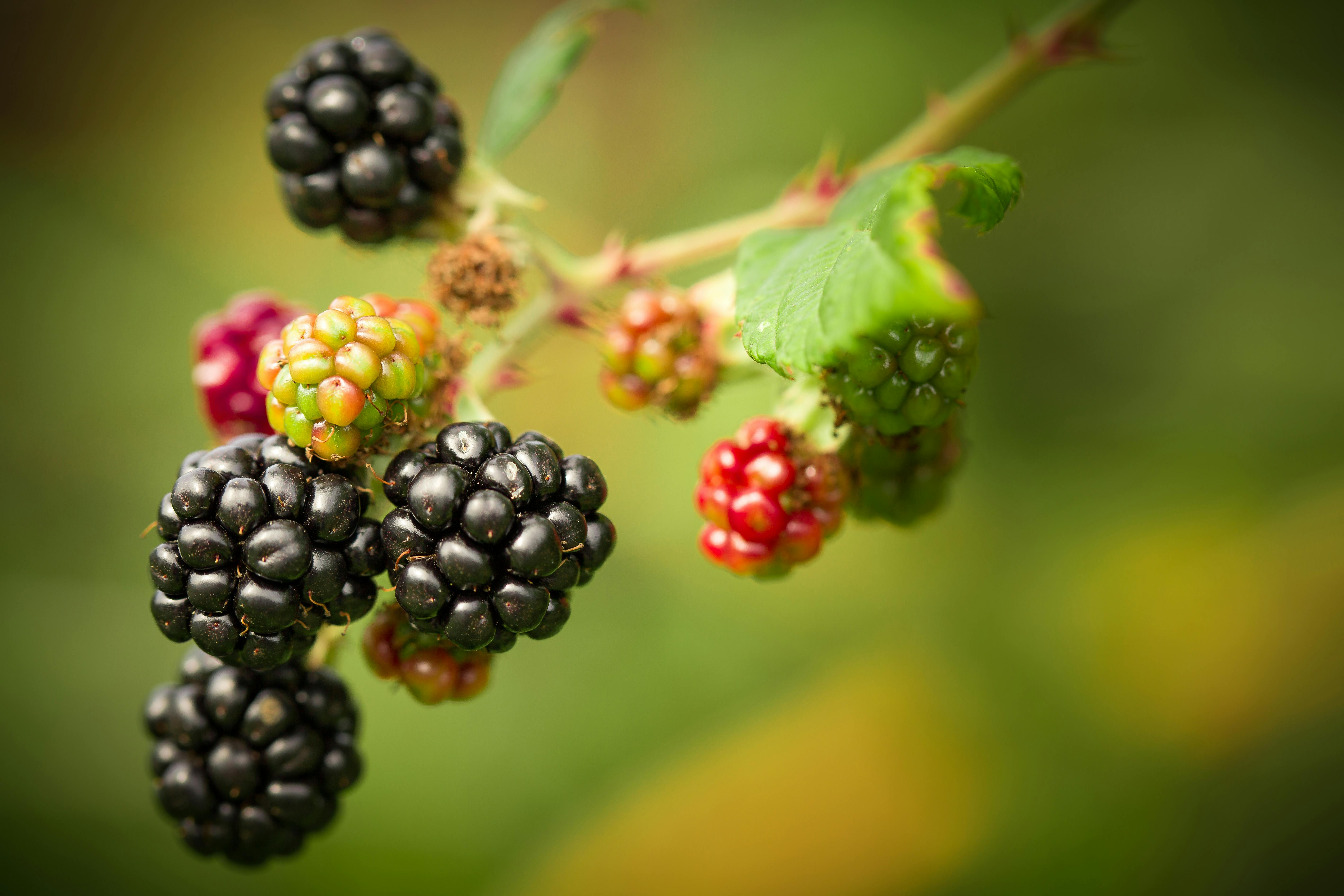Growing strawberries in Georgia is a rewarding experience. Not only are the sweet berries delicious, but they are also relatively easy to grow and maintain. In this guide, you will learn the basics of growing strawberries in Georgia, including the best varieties and when to plant them. We’ll also discuss how to care for your plants and maximize your yield. With our help, you’ll be able to enjoy a plentiful harvest of fresh, juicy strawberries in no time!Welcome to the world of growing strawberries in Georgia! Georgia is an ideal climate for growing strawberries, with a mild winter and warm summers. Strawberries can be grown in raised beds, containers, or even directly in the ground. The best time to start planting your strawberries is in early spring, when temperatures are comfortable and there is plenty of sunshine. When selecting strawberry plants, look for varieties that are well-suited to Georgia’s climate. Plant them in a sunny location with well-draining soil and make sure they have plenty of water. Once your plants are established, you will need to keep them healthy by mulching around them and providing regular watering during dry spells. With proper care, you will be able to enjoy sweet and juicy strawberries all season long!
Preparing for Planting Strawberries in Georgia
Strawberries are a popular crop to grow in Georgia and can be quite rewarding for the home gardener. Preparing for planting strawberries in Georgia involves several steps that will ensure a successful harvest. First, you must select the right variety of strawberry to plant. There are many different varieties that are well-suited for Georgia’s climate and soil conditions, so it is important to do your research and choose a type that will grow well in your particular area.
Once you have chosen the right variety, it is important to prepare the soil before planting. Strawberries need a well-drained soil with a pH between 5.5 and 6.5, so it may be necessary to amend the soil with organic matter such as compost or manure before planting. You should also make sure that any weeds or other vegetation is removed from the area prior to planting.
Once the soil is prepared, you will need to purchase strawberry plants from a local nursery or gardener’s supply store. Strawberry plants should be planted in rows and spaced at least 18 inches apart, so make sure you have enough room for all of your plants before purchasing them. It is also important to soak the roots of each plant in water before planting them in order to reduce transplant shock and help them establish quickly.
Finally, after planting your strawberries it is important to provide adequate water and fertilization throughout the growing season. Watering should be done on a regular basis and fertilizers should be applied according to package instructions, usually every two weeks during the growing season. With proper preparation and care, you can enjoy fresh strawberries from your own backyard in no time!
The Best Time of Year to Plant Strawberries in Georgia
Strawberries are a popular choice for gardeners in Georgia due to their sweet flavor and easy growing requirements. Planting strawberries in Georgia is best done during the cooler months of late fall or early winter. This timing ensures that the plants develop strong root systems and have enough time to establish themselves before the warmer weather arrives.
When planting strawberries in Georgia, it is important to select a variety that is well suited for the climate. Some varieties that do well in Georgia include Chandler, Camarosa, and Sweet Charlie. These varieties are known for their robust flavor and productivity.
Ideally, strawberry plants should be planted in late November or early December when the soil has had time to cool down from the summer heat. This timing will ensure that the plants have enough time to establish themselves before spring arrives. It is also important to ensure that the soil is well drained and amended with plenty of organic matter before planting.
It is also important to water your strawberry plants regularly once they are established. During dry periods, be sure to water your plants deeply and avoid over-watering which can lead to root rot and other diseases. Mulching around your strawberry plants can help reduce weeds and retain moisture in the soil during dry spells.
Finally, it is important to provide your strawberry plants with adequate protection from extreme temperatures as well as pests such as birds or slugs. A floating row cover can be used for this purpose as it will protect the plants while still allowing light and air circulation.
Overall, planting strawberries in Georgia is best done during late fall/early winter when temperatures are cooler and there is less risk of extreme weather or pests impacting your crop. By selecting a variety that does well in Georgia’s climate and providing adequate care throughout the growing season, you can look forward to an abundant harvest of sweet berries come springtime!
Types of Soil Suitable for Growing Strawberries in Georgia
Growing strawberries in Georgia can be a rewarding experience, as the climate and soil in the state are well-suited for producing delicious fruits. Strawberries are a low maintenance crop, but selecting the right type of soil is essential for successful cultivation. The ideal soil should be loamy and well-draining, with a pH level between 5.5 and 7.0. Clay or sandy soils can also be used with some amendments to improve drainage and nutrient availability. Compost or well-rotted manure should also be added to enrich the soil with essential nutrients.
When planting strawberries, it is important to make sure that the soil has been adequately prepared beforehand. Till the soil to a depth of at least 8 inches before planting and add amendments like compost or manure to improve fertility. If the soil is too compacted or lacks organic matter, consider applying gypsum or lime to adjust the pH level and improve drainage. A raised bed can also help improve drainage in areas that are prone to flooding or heavy rains.
Organic mulches like straw, hay, leaves or grass clippings should be applied around the plants once they have been planted into the ground. Mulching helps keep weeds away and conserve moisture in the soil during dry periods. It also helps regulate temperature and insulates young plants from extreme temperatures during summer months when temperatures can rise quickly in Georgia.
The right type of soil is essential for growing healthy strawberries in Georgia, but proper care throughout the season is equally important for optimal yield and quality fruits. Regular watering during dry spells is necessary to ensure that plants receive enough moisture throughout their growth cycle while avoiding waterlogging that could cause root rot or other diseases. Fertilizing regularly with an organic fertilizer will also help promote fruiting and healthy plant growth.
With careful preparation of the soil and diligent care throughout its growing season, strawberry plants can yield plenty of sweet delicious berries in Georgia’s warm climate year after year!
Selecting the Right Variety of Strawberry for Your Garden
When starting a strawberry garden, it is important to select the right variety of strawberry that will thrive in your particular climate and soil type. Strawberries can be divided into three main types: June-bearing, everbearing, and day-neutral. June-bearing strawberries produce one large crop of berries in early summer, while everbearing and day-neutral varieties produce crops twice a season, with smaller harvests throughout the summer and fall. Choosing the right variety for your garden will ensure that you have a successful crop of sweet, juicy strawberries.
When selecting a strawberry variety for your garden, consider your local climate and soil type. June-bearing strawberries require cooler temperatures and prefer well-draining soil with a pH level between 6.0 and 7.0. Everbearing varieties are more tolerant of warmer temperatures and can tolerate heavier soils with higher pH levels as well. Day-neutral varieties are the most tolerant of warmer temperatures but may not be as resilient to cold weather as other types of strawberries.
It is also important to consider the size and flavor of the berries when selecting a variety for your garden. June-bearing varieties tend to produce larger berries that are sweeter than everbearing or day-neutral varieties. However, everbearing and day neutral varieties tend to produce more fruit overall than June-bearing varieties. When choosing a variety for your garden, consider which qualities are most important to you – size or quantity?
Finally, consider how much care each type of strawberry will need once it is planted in your garden. June bearing strawberries require more maintenance than everbearing or day neutral varieties, such as regular fertilizing and pruning throughout the season to ensure maximum yields come harvest time. Everbearing and day neutral varieties require less maintenance but may not yield as much fruit as June bearing varieties do when given proper care.
By considering all these factors – climate, soil type, size/flavor preferences, and amount of care needed – you can find the perfect strawberry variety for your garden! With some research and careful selection you can soon be enjoying sweet juicy strawberries from your own backyard!

Planting
Planting strawberry plants in Georgia is a great way to enjoy fresh, flavorful strawberries. Strawberries are easy to grow and require very little maintenance. Before planting your strawberry plants, make sure you choose the right variety for your region and soil type. Select a well-draining spot in full sun and prepare the soil by loosening it with a shovel or rototiller. Plant each plant 12-18 inches apart with the crown of the plant at soil level. Water thoroughly after planting and mulch to help conserve moisture and keep weeds down.
Care
Strawberry plants will need consistent water throughout their growing season. Aim for about 1 inch of water per week, either from rainfall or irrigation. Fertilize your plants in late winter or early spring with a balanced fertilizer like 10-10-10 or 5-10-5. Apply according to label directions and be sure not to overfertilize as this can cause excessive leaf growth at the expense of fruit production. Check for pests regularly and use an insecticidal soap if needed to control any pests before they become a problem.
Harvesting
Once your strawberry plants begin producing fruit, harvest as soon as they are ripe. Strawberries do not ripen once picked so make sure you pick them when they are fully red and sweet. Enjoy your fresh strawberries immediately or store them in the refrigerator for up to a week.
Protecting Strawberry Plants from Pests and Disease
Strawberry plants are a delicious and popular fruit, but they can be vulnerable to pests and disease. Fortunately, there are some simple steps that can be taken to protect strawberry plants from harm. One of the most important things you can do is make sure the plants are in an environment that encourages healthy growth. This includes providing adequate sunlight, air circulation, and soil drainage. Additionally, it’s important to keep the soil moist but not soggy, and to fertilize regularly with a balanced fertilizer.
It’s also a good idea to inspect your strawberry plants regularly for signs of pests or disease. Common pests include slugs, aphids, caterpillars, mites, and thrips. Signs of disease may include discoloration or wilting of leaves. If you notice any of these problems, you should take steps to treat them right away. For example, if the problem is caused by a pest infestation you may need to use an insecticide or other method of pest control.
In addition to these preventive measures, it’s also important to practice good hygiene when caring for your strawberry plants. Make sure all gardening tools are clean before use and avoid working with the plants when they’re wet with dew or rainwater in order to minimize the spread of disease. Finally, keep a close eye on your strawberry plants throughout the growing season and take action quickly if any problems arise. By following these tips you can help ensure that your strawberry plants stay healthy and productive for years to come!
Watering and Fertilizing Strawberries in Georgia
Growing strawberries in Georgia can be a rewarding experience. In order to get the best results, it is important to water and fertilize your strawberry plants properly. Here are some tips on how to do this:
Watering your strawberry plants is essential for their health and growth. It is best to water the plants in the morning, so that the moisture can soak into the soil before afternoon heat sets in. Make sure that you water deeply, reaching all of the roots of your plants. If you are using a drip irrigation system, make sure to adjust it accordingly.
When it comes to fertilizing strawberries in Georgia, you will want to use a fertilizer that is high in nitrogen content. This will help promote leaf growth and berry production. You will also want to use a balanced fertilizer with trace elements such as magnesium and iron for optimal results. It is best to fertilize your strawberry plants every three weeks during their growing season, which usually runs from March through October in Georgia.
Finally, be sure not to over-fertilize your strawberry plants as this can lead to acidic soil and reduce yields. Make sure you follow the instructions on the fertilizer label carefully and do not apply more than what is recommended for optimal results. With proper watering and fertilization practices, you can enjoy delicious berries from your own garden!

Conclusion
Growing strawberries in Georgia can be a rewarding experience. With the right soil, climate, and planting techniques, you can produce a delicious crop of sweet strawberries. Taking the time to prepare your soil correctly and using the appropriate fertilizers and pest control measures can help ensure a successful harvest. Finally, mulching and irrigating your strawberry plants properly are key for helping them thrive throughout the season. By following these steps and being mindful of pests, diseases, and other environmental conditions, you can have success growing fresh strawberries in your backyard or garden.
So if you’re looking for a rewarding experience that will provide you with delicious fruit all season long, then consider growing strawberries in Georgia! With proper care and attention, you can be sure to get the most out of your strawberry crop this year.



